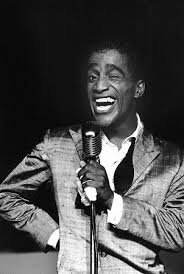One of His Best Performances
Sammy Davis Jr.
(December 8, 1925 ~ May 16, 1990)
Early Life
Sammy Davis Jr. was born on December 8, 1925 in Harlem, New York. He was initially raised by his grandmother on his father’s side, but when he was three years old, his parents split up, and Sammy moved in with his father who was an entertainer with a dance group. When his father and uncle went on tour, Sammy went with them and eventually learned to tap dance, which later allowed him to join the group, changing the name to the Will Mastin Trio. Because the group traveled so much, Sammy was not able to get a full education, despite his fathers efforts to provide that by hiring tutors on the road.
Career
Davis was not only a great dancer, but he was also a skilled singer, multi-instrumentalist, and comedian; he quickly learned that he had many talents, and put his talents to work by starring in his first film, Rufus Jones for President, as a dancer in 1933. Davis’s career was put to a halt when he was drafted into the army to fight in WWII in 1943. During this time, Davis experienced extreme racial prejudice, abuse, violence, and harrasment that he had not experienced before because his father protected him from it. His fellow soldiers went so far to break his nose. Davis quickly found that entertainment was a form of safety and ability to gain his hateful audience’s love. After the war, Davis continued his career with the Will Mastin Trio, and even started to sing in clubs and release some of his own solo albums. Davis eventually signed with Decca Records in 1954. In 1955 Davis released first two albums, Starring Sammy Davis Jr.and Sammy Davis Jr. Sings Just for Lovers, which earned him roles in films and even the Broadway hit musical, Mr. Wonderful, where he performed alongside other famous dancers. In 1966, Davis hosted his own short-lived variety series, The Sammy Davis Jr. Show. Years later, he hosted again for the talk show Sammy and Company, from 1975-1977.
Personal Life
Davis was romantically connected to actress, Kim Novak, in the 1950’s, but their relationship was controversial due to the racial and segregation status at the time. Davis married briefly to singer Loray White, then to Britt in 1960, having a biological daughter and two adopted sons. The couple divorced around 1969, and Davis remarried in 1970 to dancer, Altovise Gore, who remained with him until his passing; They adopted another son as well. In 1954 while driving to Los Angeles for a solo recording, Davis was injured in a serious car accident resulting in the loss of one of his eyes. He used a glass eye for the rest of his life, and even converted to Judaism after realizing the similar struggles that Jews and African Americans faced. Davis also published many biographies in his life including, 1965 autobiography Yes I Can: The Story of Sammy Davis Jr., followed by Why Me? in 1980. Sammy, was released after his death in 2000, while the biography by Wil Haygood In Black and White: The Life of Sammy Davis Jr. was published in 2003.
Death
Davis struggled with alcohol and drug addictions for most of his life, and also had a gambling problem, where he lost millions of dollars. In the late 1980’s, Davis’s health began to deteriorate. Davis was a frequent smoker, so resultantly, in 1989, doctors found a tumor in his throat. He started radiation therapy, and it appeared that the disease was leaving his body, but it later returned. On May 16, 1990, Davis passed away at his home in Beverly Hills, California.
(Sammy Davis Jr. ends at 2:90)
